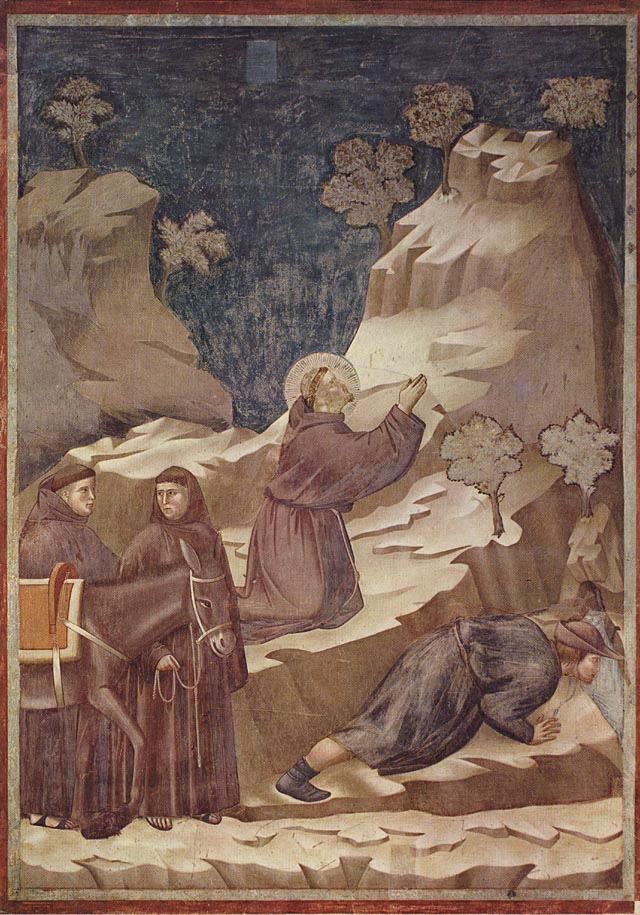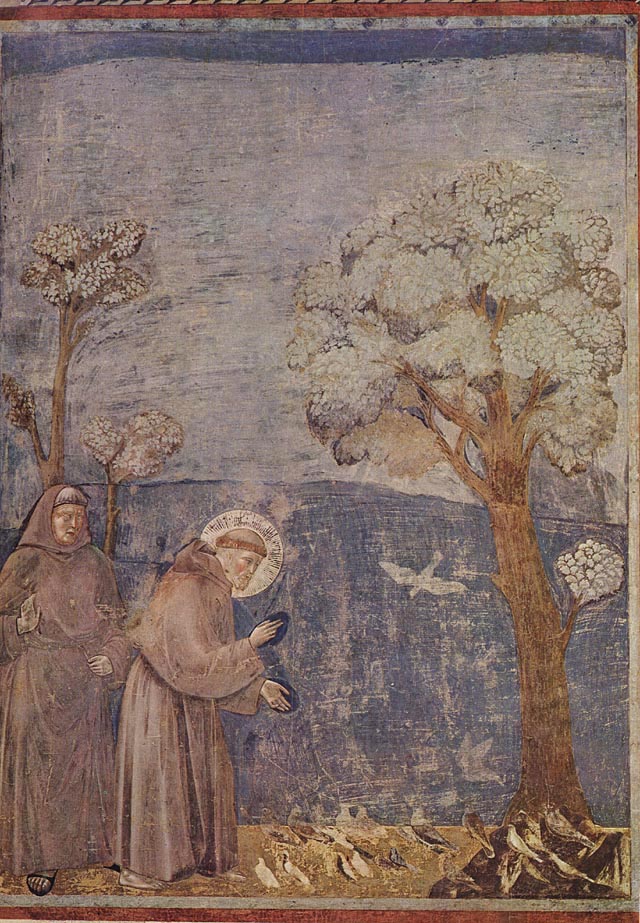Part III. Italy
Chapter 52. Francesco [March 24, 1348]
Cultural Explanations
 |
Part III. Italy Chapter 52. Francesco [March 24, 1348] Cultural Explanations |
|
 |
In this chapter Bávlos hears about Francesco |
| Piazza outside the cathedral |
In this chapter, Bávlos meets Franciscan friars for the first time and hears about their founder St. Francis of Assisi (1182-1226). Medieval preaching was often disconnected from the sacrifice of the mass. The mass occurred within the church, cathedral, or chapel, and was conducted in Latin. The laity were literally mere bystanders in the ritual, standing behind the rood screen to watch and listen. Preaching, on the other hand, was conducted in the vernacular and occurred often in the open squares, often on Sunday afternoons, as in this chapter. By the fourteenth century, such public preaching—previously the exclusive right and responsibility of the bishop—had become the special province of the mendicant orders, e.g., the Dominicans and the Franciscans. St. Francis of Assisi, having died in 1226, just over a century earlier, remained a novelty in Italian Christianity and many people were still alive who knew someone who had known or seen Francis or his original followers. The various miracles of St. Francis were favorite legends of the fourteenth century, particularly among the preaching friars of the Franciscan order.
In the great Basilica of St. Francis in the city of Assisi, begun in the year on Francis's canonization (1228), the painter Giotto created a series of frescos depicting various of the saint's miracles, including his creation of a spring for the thirsty traveler and his preaching to the birds. These tales appear for in St. Bonaventure's vita of St. Francis from 1266, and the frescos seem to have been commissioned and executed between 1296 and 1305. For a full exploration of these frescos, visit the basilica's website HERE. Significantly, the two depictions pictured below occupy places at the very end of the upper basilica's nave, as far from the high altar as possible.
 |
Giotto's depiction of the miracle of the spring, Basilica of St. Francis of Assisi source site HERE |
 |
Giotto's depiction of the miracle of preaching to the birds, Basilica of St. Francis of Assisi source site HERE |
Bávlos regards these legends as indicative of Francesco's shamanic nature, something which he views as distinctly Sámi. Given the stark contrasts between his own culture and that of Italy, underscored constantly by the disparaging remarks of Buonamico, this sudden linkage between an Italian preacher and a Sámi noaide startles Bávlos. It also seems to relate directly to Iesh's shamanic tendencies, as evidenced in the healing of the girl through the words that Bávlos interprets as "Dá lahttu golbma," [here limbs three]. Mark's Bible account transliterates Christ's Aramaic as Talitha koum, or koumi, which has been glossed as meaning "young feminine one, rise up."